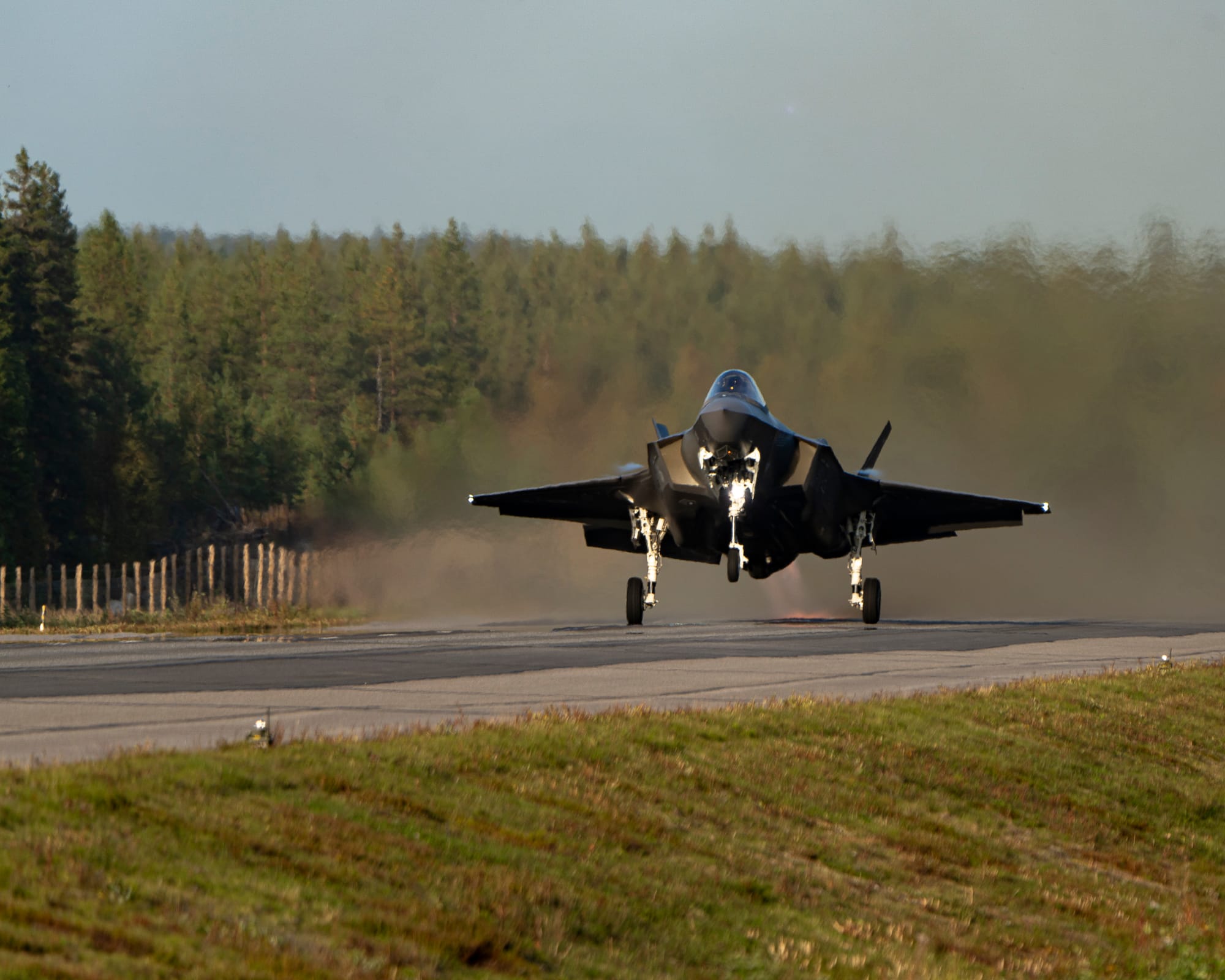The Arctic Debrief: Ukrainian drones reach Russia's Northern Fleet Base
In this edition: Ukrainian drones reported in Severomorsk, Russia; NATO practices emergency highway landings; Norway orders advanced radars to monitor Arctic region; and Record-breaking cargo vessel sets off on Arctic route

In this edition:
- Ukrainian drones reach Russia's Northern Fleet Base
- NATO practices Arctic Highway Landings; Norway orders advanced Arctic radars
- Record size shipping container sets off on Arctic route
Latest Developments
Ukrainian drones reach Russia's Northern Fleet Base

The Russian Ministry of Defense has reported that three Ukrainian drones had been intercepted over the city of Severomorsk in the Murmansk region. Russia's Northern Fleet, responsible for operations in the Arctic and nearby seas, is based in the city and was undergoing naval exercises, with a focus on submarine warfare.
As a result the city shutdown its airport and released a bombing alert to nearby settlements. The Ministry reported that all drones were shot down, however Russian authorities are known for under reporting damage caused by Ukrainian forces.
Although this is not the first time Ukraine targeted the Murmansk region, it is the first report of drones near Severomorsk.
In the past two months it has been reported that Russia's northern Olenya air base was targeted several times. The attacks damaged multipe Tu-22M3 strategic bombers. After the attacks the regional military administration stated that it would increase security measures to prevent future attempts to damage equipment and infrastructure.
Norway orders advanced Arctic radars; NATO practices Arctic Highway Landings

NATO forces have shown the ability to use Finnish highways, which are only 30 meters wide, as runways. This was done by American F-35s and German Euro-fighters, who were participating in a military exercise Baana 24 in the Finnish Arctic region of Lapland.
The three nations were holding joint military training in the area between Aug. 31 and Sept.6, when the feat was accomplished by both American and German fighter jet pilots.
Majority of the exercise, which took place just 200km away from the Russian border, focused on combined arms combat including simulation of unconventional situations such as landing and taking off on highways.
NATO allies have stressed the importance of ensuring the cooperation and interoperability of forces from all nations, especially with the recent addition of Sweden and Finland to the alliance.
In other news, Norway has ordered three TPY-4 radar systems to increase its ability to monitor the Arctic region, according to an announcement by Lockheed Martin which manufactures the systems. This brings the total number of these radar systems in Norway to 11.
Record size shipping container sets off on Arctic route

A Panamax container ship traveling to China is going to set the record for the largest cargo ship to traverse the Arctic ocean. The ship is about two times the size of the previously largest vessel to make the journey.
Container ships of this size are extremely rare in these waters, but it may be the beginning of a trend that could have significant impacts on global trade. Last week the vessel left St.Petersburg on Sept. 3 and is expected in the Chinese city of Qingdao around the end of the month. This is about 10 days faster than if the ship had traveled through the Suez Canal.
Although year-round shipping is still multiple years away from becoming the norm, the Arctic is seeing a steady increase of shipping during warm seasons. To further bolster Arctic shipping China and Russia are manufacturing ice-breaker fleets to help clear the path for ships that normally would not be able to make the trip.
Russia and China have been increasing cooperation in the region, with a specific focus on improving cargo traffic through the Northern Sea Route, which mostly goes along the Russian northern coast.

